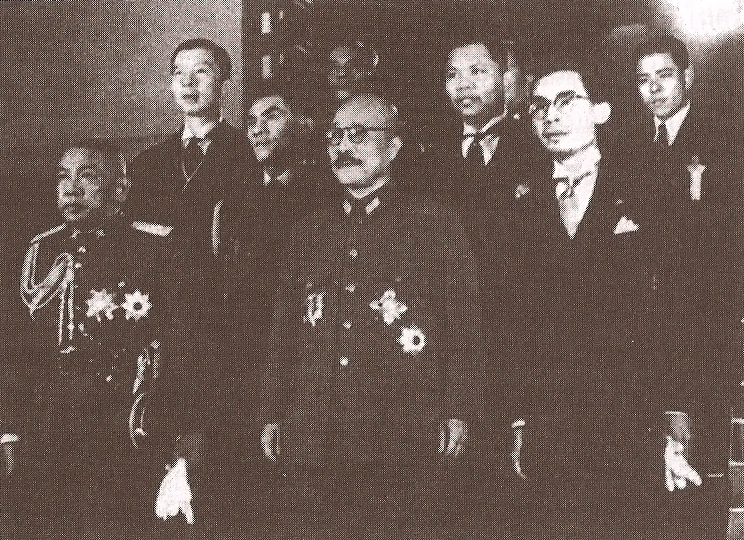Posts Tagged ‘Tojo’


Born on December 30, 1884, Hideki Tojo would rise to the heights of power within the Japanese military and government. Following in his father’s footsteps, he joined the Imperial Japanese Army and was commissioned a lieutenant in 1905. By 1937, he was Chief of Staff of the elite Kwantung Army, and in July 1941 was appointed Minister of War. A mere three months later, he was named Prime Minister.
Tojo was nationalist, militaristic, and in favor of an aggressive foreign policy. He believed strongly in Japanese expansionism and unapologetically seizing land from China and maintaining control over Korea. He fully supported the attack on Pearl Harbor and other Allied outposts in the Pacific. The success of these attacks as well as other early-war victories boosted Tojo’s popularity among the Japanese populace, but following the blow to the Imperial Japanese Navy at Midway and subsequent losses, his likeability quickly declined. When Saipan fell to US troops in July 1944, Tojo saw that Japan could not win the war and resigned, possibly under coercion from Hirohito.
(more…)




Photograph of Phot Phahonyothin (far left) with Hideki Tojo (center) in Tokyo 1942)
On this day in 1941, Thailand allied with Japan. Thailand was valuable for the Axis powers, as their airfields, ports, and railways would be instrumental in planned invasions of Malaya and Burma. The partnership was not necessarily an equal one; their alliance was the result of the December 8 Japanese invasion of Thailand after failed negotiations, the Thai resistance lasting only hours before a ceasefire was declared. Like many countries, Thailand joined the Axis powers because of military pressure.
Why countries joined the Axis or the Allies was complex, often rooted in many different factors, such as how much military power that country held, what political system they followed, and where they were located geographically. When trying to understand the complicated course of WWII, it is helpful to know the main players and their goals. So, who were the Axis powers and who were the Allies? (more…)



December 7, 1941, is a date which retains its unique power in the national consciousness of the American people because it marks our entryway into the Second World War and ultimately the pathway to the dominant position of the United States in world affairs, the Pax Americana of the twentieth century. The Japanese attack decisively ended American neutrality and our efforts to isolate the nation from the previous decade of troublesome world affairs. To many, it is the day the United States shed its innocence and naiveté, and shouldered the burdens of world leadership.
For most Americans, however, the Japanese attack was a surprising gateway to this destiny. Events in remote Asia were not seen as an immediate threat to the United States at the end of 1941. Instead, it seemed more likely that the United States would be drawn into war with Nazi Germany, as the American convoys carrying Lend-Lease to Great Britain came under fire from the German navy. Instead, war came to Americans in an unanticipated, blinding flash from across the Pacific, an attack that succeeded beyond the imagination of its planners in many respects, an attack that caught the American military unawares and in an embarrassed state and exposed condition. The story of the missed signs, misinterpretations, misunderstandings and many ironic passages which all combined to lead to Pearl Harbor is a vast tapestry.
(more…)





